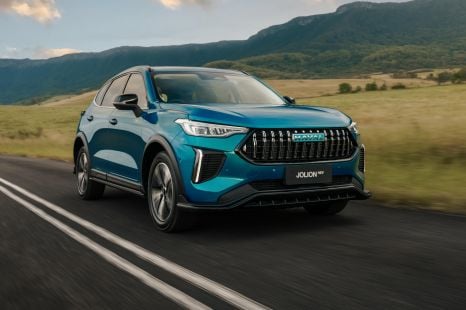

William Stopford
Will 2026 be the year of the people mover in Australia? China seems to think so
22 Hours Ago

Contributor
Mini’s new range of electric cars will be built in China and Germany, rather than at the brand’s spiritual home in the UK.
A report for The Timesrevealed the production of electric vehicles at the Cowley plant in Oxford, UK, will end in 2023.
Production of the replacement for the current Mini Electric 3-Door will be moved to China, while the upcoming MiniCountryman EV will be built alongside its BMW X1 cousin in Leipzig, Germany.
The as-yet unrevealed Aceman, which will be smaller than the current Countryman SUV, will also be built in China as part of BMW’s joint venture with Great Wall Motor.




Manufacturing will continue in Oxford, however. Mini has confirmed it’ll keep building internal-combustion models in the UK, and has previously said petrol power will live on in its range until 2030.
“Oxford will always be the home of Mini,” a spokesperson told The Times. The spokesperson said electric Minis built in the UK would need to be made on an assembly line developed by GWM, in place of the existing production lines.
“Oxford is not geared up for electric vehicles,” the spokesperson said. “It will need renovation and investment.”
The Times reports the spokesperson provided “no date” for EV manufacturing to return the UK.


Mini will take its first steps toward a new, electric-dominated range in 2023.
Based on the latest information from Mini, its next-generation model rollout will include the following cars:


The next Mini hatch, the core model for the brand and the most recognisable shape in the range, will be offered with a choice of petrol or pure-electric power when it launches.
It’s not clear whether both cars will be built on the same platform. It’s likely the petrol-powered car will be built on the BMW FAAR platform, a development of the UKL platform used under the current range.
These official BMW images reveal the electric Mini Hatch will have tiny overhangs and a more steeply-raked windscreen than the current car.
Where expert car reviews meet expert car buying – CarExpert gives you trusted advice, personalised service and real savings on your next new car.
Scott Collie is an automotive journalist based in Melbourne, Australia. Scott studied journalism at RMIT University and, after a lifelong obsession with everything automotive, started covering the car industry shortly afterwards. He has a passion for travel, and is an avid Melbourne Demons supporter.


William Stopford
22 Hours Ago


Max Davies
22 Hours Ago


Derek Fung
23 Hours Ago


Matt Campbell
1 Day Ago


Ben Zachariah
2 Days Ago


Damion Smy
2 Days Ago